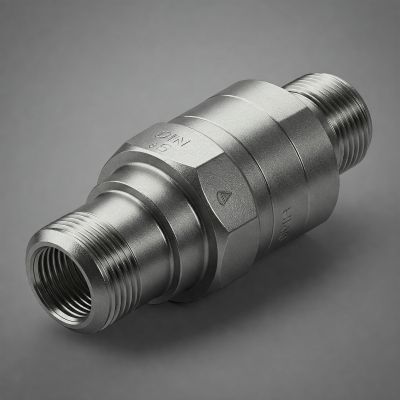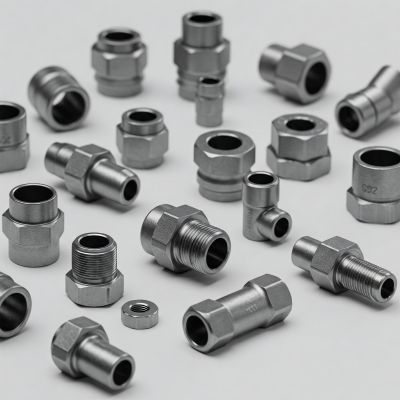In the world of manufacturing and construction, precision and consistency are non-negotiable. Whether you’re assembling a car engine or constructing a high-rise, every bolt, nut, and fastener must meet specific quality and dimensional standards to ensure safety, performance, and reliability. That’s where engineering standards come into play.
Two of the most widely recognized sets of standards in the global market are DIN and ISO. DIN, short for Deutsches Institut für Normung, represents German engineering excellence, while ISO, the International Organization for Standardization, focuses on global consistency and interoperability.
In this post, we’ll break down the pros and cons of DIN and ISO standards, highlight their key differences, and offer practical tips to help engineers, buyers, and manufacturers choose the right standard for their projects.
What Are DIN Standards?
DIN stands for Deutsches Institut für Normung, the German Institute for Standardization. Founded in 1917, DIN developed engineering standards that quickly became synonymous with high precision and reliability, especially across Europe.
DIN standards focus heavily on detailed dimensions, material specifications, and mechanical tolerances — making them especially popular in fields that demand tight tolerances and exceptional consistency, such as mechanical engineering, automotive manufacturing, and industrial machinery.
For decades, DIN standards have been the go-to for German and European industries, often seen as the benchmark for quality and durability in components like bolts, nuts, and fasteners.
What Are ISO Standards?
The ISO (International Organization for Standardization) is a globally recognized body dedicated to creating unified technical standards for industries worldwide. Founded in 1947, ISO brings together experts from over 160 countries to promote smooth cross-border trade, product compatibility, and technical cooperation.
ISO standards emphasize interoperability and international collaboration, ensuring that components designed and manufactured in different parts of the world fit and function together. Whether you’re working with fasteners, electronics, or consumer products, ISO standards help streamline global supply chains.
Because of this, ISO has become the default choice for many modern manufacturers looking for a universal standard that guarantees reliability while simplifying international logistics.
Pros and Cons of DIN Standards
✅ Pros:
1. Highly precise with strict tolerances — ideal for applications requiring a perfect fit.
2. Long-standing reputation for durability and consistency, especially in German and European engineering.
3. Well-documented and trusted in industries like automotive, construction, and heavy machinery.
❌ Cons:
1. Limited global compatibility — not always ideal for international projects.
2. Being gradually replaced by ISO equivalents in many industries.
3. Potential for confusion or mismatch when sourcing parts across borders.
Pros and Cons of ISO Standards
✅ Pros:
1. Internationally recognized and standardized, making global sourcing and collaboration easier.
2. Promotes component interoperability across manufacturers and regions.
3. Widely accepted in global supply chains, reducing logistical complications.
❌ Cons:
1. Broader tolerances in some cases compared to DIN, which might affect precision.
2. May require adjustments for machinery originally designed to DIN specifications.
3. Older equipment compatibility issues when retrofitting ISO-standard parts.
Key Differences Between DIN and ISO Standards
Metric vs Inch Systems:
DIN traditionally focuses on the metric system, while ISO primarily uses metric but aims for broad global relevance, sometimes overlapping with inch-based standards in international use.
Tolerances and Dimensions:
DIN often defines tighter tolerances, whereas ISO may allow slight dimensional flexibility to improve interoperability.
Material Specifications:
Both specify high-quality materials, but definitions and classifications may vary slightly depending on the use case.
Markings and Identification:
DIN and ISO parts are labeled according to their respective standards, which helps engineers quickly verify compatibility.
Adoption Regions:
DIN is common across Europe, especially in German-originated industries. ISO has a broader international footprint, making it more suitable for cross-border projects.
Practical Selection Tips
Consider Geographic and Industry Norms:
1. Use DIN for European-made machinery and legacy equipment.
2. Choose ISO for projects involving global suppliers and partners.
Check Project Compatibility:
Always match nuts, bolts, and fasteners to the corresponding standard to avoid assembly issues.
Assess Tolerance and Fit Requirements:
1. If your design prioritizes tight mechanical fit, DIN might be the better choice.
2. If you need flexibility in sourcing, ISO could save time and cost.
Think About Future-Proofing:
ISO is fast becoming the default for new designs and equipment, especially for companies scaling globally.
Always Consult Technical Documentation:
Verify with spec sheets, CAD models, and supplier datasheets to ensure you select the correct standard before ordering.
Comparison Table: DIN vs ISO
|
Feature |
DIN Standards |
ISO Standards |
|
Geographic Focus |
Europe, especially Germany |
Global |
|
Tolerances |
Tight and precise |
Broader for flexibility |
|
Compatibility |
Best for legacy equipment |
Best for global sourcing |
|
Adoption |
Strong in European industries |
Growing international dominance |
|
Markings |
DIN marking |
ISO marking |
FAQ
Can DIN and ISO parts be interchanged?
Sometimes — but always check dimensions, thread type, and tolerances, as small differences can cause issues.
Are DIN standards obsolete?
Not obsolete, but many are being superseded by ISO equivalents for easier global trade.
When should I choose ISO over DIN?
Choose ISO for global projects, international supply chains, or when future-proofing new designs.
Conclusion
Both DIN and ISO standards offer high-quality guidance for manufacturing and assembly, but they are built to serve different needs. DIN’s strength lies in its precision and historic reputation in European industries, while ISO focuses on enabling smooth global collaboration and interoperability.
When choosing between the two, always consider your project’s location, tolerance requirements, and supply chain strategy. And most importantly, always verify part specifications before committing to a purchase — it’s a small step that can prevent costly mistakes.
Post time: May-16-2025



